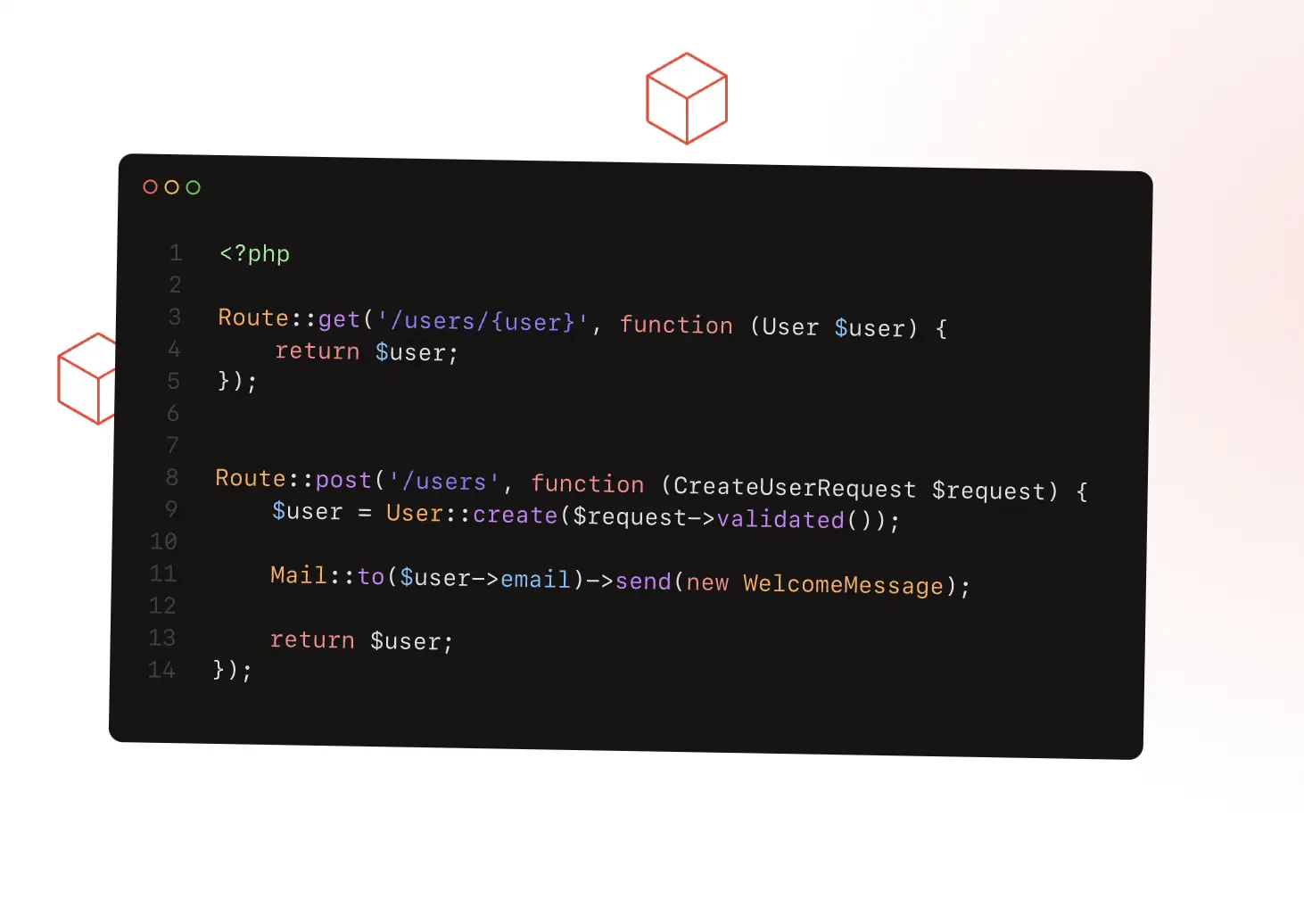In the ever-evolving world of web development, staying ahead of the curve is crucial for creating and maintaining a competitive edge. Among numerous technologies available today, Laravel has emerged as one of the most sought-after PHP frameworks for building robust and scalable web applications. With its elegant syntax, powerful tools and extensive community support, Laravel enables developers to streamline their work process and bring ideas to life with ease. However, it’s no secret that performance plays an integral role in determining an application’s success; after all, even a beautifully designed platform can falter if it doesn’t deliver on speed. If you’re eager to supercharge your Laravel-powered projects but aren’t sure where to start—fret not! We’ve compiled five essential tips that will help take your web application’s performance from good to great. Get ready to dive into optimization techniques like caching strategies, Eloquent ORM best practices ,and much more—all geared towards boosting efficiency while keeping user experience front-and-center. So buckle up and join us on this journey towards enhanced Laravel mastery!
Profiling and Optimizing Your Laravel Application
Profiling and optimizing your Laravel application is a crucial step towards improving its performance significantly. Profiling involves analyzing the application’s code to identify any bottlenecks that could be causing delays or performance issues. Laravel provides several tools for profiling your application, such as Telescope, Debugbar, and Clockwork. These tools give you a detailed overview of your application’s performance, allowing you to pinpoint slow requests, queries, or functions. After identifying the bottlenecks in your Laravel application, the next step is to optimize them to enhance performance. You can use various techniques to optimize your Laravel application, such as caching, lazy loading, eager loading, and database indexing. Caching can significantly improve your application’s response time by storing frequently used data temporarily in memory or file. Lazy loading improves performance by loading related models only when they are required instead of loading everything at once. Eager loading fetches all related data in one go, reducing the number of database queries required and improving performance. Database indexing is another vital optimization technique that can improve query speed by organizing data in a specific way to enhance retrieval speed. Finally, it’s essential to regularly monitor your Laravel application’s performance to measure its effectiveness and detect any new issues that may arise. You can use tools like New Relic or Blackfire to monitor your system and get an overview of its performance over time. By regularly profiling and optimizing your Laravel application and monitoring its performance, you can ensure that it remains fast and responsive even as it scales.
Leveraging Eloquent ORM for Efficient Database Management
Leveraging Eloquent ORM for Efficient Database Management: Laravel’s Eloquent ORM is one of the best features of the framework, offering an intuitive way to interact with databases. Eloquent comes with an array of features such as eager loading, lazy loading, and query optimization that make database management a breeze for developers. This ORM uses object-oriented principles and the Active Record pattern to abstract database interactions, allowing you to simplify your codebase and speed up development. One significant advantage with Eloquent is its ability to handle relationships between tables in a database easily. You need to define the relationship between tables just once in your model, and Eloquent takes over from there. When you request data from a model with a relationship, you can specify which related model fields you want to include in your query results, all with a few lines of code. Additionally, Eloquent uses lazy loading to load only the necessary data and avoid unnecessary queries. By reducing the number of queries issued to the database, this significantly improves the application’s performance. Eloquent also supports model events – allows you to define hooks that run on specific events such as saving, deleting or updating records – making it easier to manage model dependencies or trigger actions based on your business logic. Caching database queries is another feature worth noting; caching speeds up requests from frequently accessed data by storing query results in memory and serving cached data when needed. In conclusion, by making use of Laravel’s Eloquent ORM, developers can manage databases efficiently while reducing development time and boosting application performance significantly. Eloquent is easy to learn but offers unparalleled flexibility and power compared to other ORM tools available in the market.
Implementing Cache Strategies to Reduce Server Response Time
Implementing Cache Strategies to Reduce Server Response Time Caching is a technique used to store frequently accessed data in memory or on disk, which can greatly reduce the server response time for web applications. Laravel provides a variety of caching strategies that can be implemented to boost the performance of your web application. One common caching strategy is to cache database query results. When a user requests data from the database, Laravel will first check if the data is already cached. If it is, the cached data will be returned instead of querying the database, resulting in a faster response time. To implement this strategy, you can use Laravel’s built-in caching system, which supports several caching backends such as Memcached and Redis. Another caching strategy is page caching, which involves storing the entire HTML output of a page in a cache. When a user requests the same page again, the cached HTML will be returned instead of executing PHP code and querying the database, resulting in a significant improvement in response time. Laravel provides a simple way to implement page caching using middleware. Laravel also supports caching view templates, which involves storing the compiled version of Blade templates in memory or on disk. When a view is rendered, Laravel will first check if the compiled template is already cached. If it is, the cached template will be used instead of compiling the template again. This can significantly reduce the time it takes to render views. In conclusion, implementing cache strategies in Laravel can greatly improve your web application’s performance by reducing server response time. By caching frequently accessed data and pages, you can reduce the load on your server and provide a faster user experience for your visitors.
Utilizing Task Scheduling and Queues for Asynchronous Processing
Utilizing Task Scheduling and Queues for Asynchronous Processing Asynchronous processing has become increasingly important for web applications to handle server requests more efficiently. Laravel Framework offers two powerful tools, task scheduling and queues, to help developers manage and optimize this process. Task scheduling allows the developer to automate recurring tasks such as sending email reminders, updating database records, and cleaning up old files. By automating these tasks, the application can run more smoothly with less user intervention. Laravel provides a simple syntax for defining scheduled tasks in the application’s codebase. With a clear separation of concerns, the developer can focus on writing clean, maintainable code while Laravel takes care of the task scheduling. Queues offer a more flexible way to process server requests. For example, if your application needs to send hundreds of emails at once, instead of processing each email request sequentially and holding up server resources, Laravel can use a queue to process requests asynchronously in the background. This allows the server to handle multiple requests simultaneously and improves overall performance. Laravel’s queue system is built on top of popular queue backends like Redis and Beanstalkd. The queues work by pushing work to a server that listens for queued jobs and then executes them as they come in. Developers can define job classes to handle specific tasks and Laravel makes it easy to manage queued jobs with commands like `queue:work` and `queue:retry`. Task scheduling and queues are just two examples of how Laravel Framework provides developers with powerful tools for optimizing web application performance. By using these features together or separately, developers can take their applications to the next level in terms of speed, scalability, and user experience.
Configuring Asset Compilation and Minification for Improved Load Times
Web applications built on the Laravel framework may contain a large number of CSS and JavaScript files, which can increase load times and create a negative user experience. To improve performance, Laravel provides asset compilation and minification, which combines multiple CSS and JavaScript files into a single file and removes unnecessary spaces and characters. To configure asset compilation and minification in Laravel, first, we need to install the Laravel Mix package by running the following command on the command line: “`bash npm install laravel-mix –save-dev “` Once installed, we can create a configuration file called webpack.mix.js in the root directory of our Laravel project. This file specifies the source files and output directories for the compiled assets. Next, we can define the source files to be compiled using Mix’s API. For example, to compile all CSS files in the resources/assets/css directory, we can use the following code: “`javascript mix.styles([ ‘resources/assets/css/*.css’ ], ‘public/css/app.css’); “` This will combine all CSS files in the specified directory into a single file called app.css in the public/css directory. Similarly, we can compile JavaScript files using Mix’s API. For example, to compile all JavaScript files in the resources/assets/js directory, we can use: “`javascript mix.scripts([ ‘resources/assets/js/*.js’ ], ‘public/js/app.js’); “` This will combine all JavaScript files in the specified directory into a single file named app.js in the public/js directory. Finally, we can run Mix’s compile command using npm or yarn: “`bash npm run dev “` This will compile all of our assets according to the configuration defined in webpack.mix.js. By configuring asset compilation and minification, we can significantly improve our web application’s load times and provide a better user experience.




